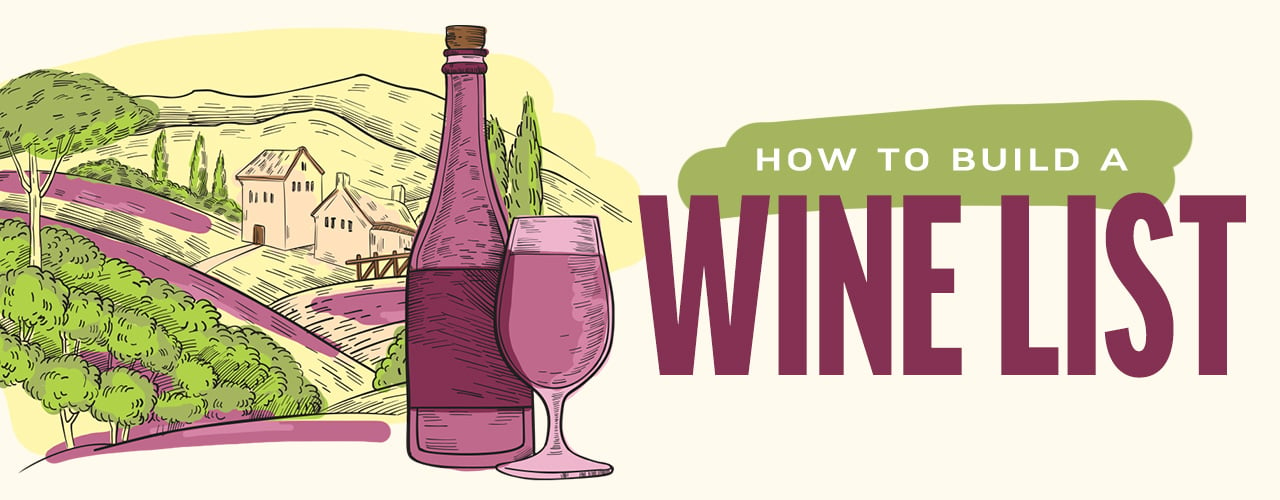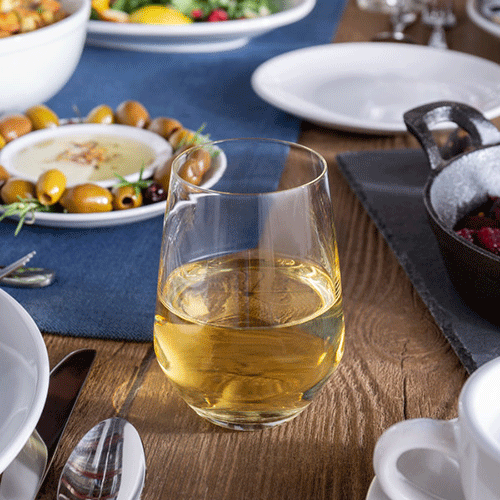
Many restaurants do not have the luxury of having a sommelier to help create a wine list. In fact, only a small number of restaurants have this privilege. This means that it is the responsibility of the restaurant owner or manager to choose wines that pair well with the menu. To run a successful wine service, follow the guidelines below to create a wine list that is both financially rewarding and appealing.
Shop All Wine GlassesTips for Designing a Wine List

Whether you’re dedicating a page on your menu or creating a separate wine list for every table, there are several ways you can make your menu easy to read for the customer while maximizing your profitability.
- Do not organize wine by price
- Keep the list simple and provide important information like vintage, country of origin, body, and price per glass or bottle
- Offer variety to appeal to various price points and tastes
- Arrange your collection in an order that makes logical sense, such as dry to sweet, table wine or dessert wine, by geographical origin, or by the body of the wine
- Highlight specially selected mid- to high-priced wines on the menu to upsell or showcase
- Suggest food and wine pairings on menu items
- Keep your wines rotating seasonally to keep it from becoming too stale or boring
Select types of wine that complement your menu. For example, if you have a steakhouse, you want a lot of bold, full-bodied reds and less floral whites. If you run an Asian restaurant, serve more delicate, spice- and fruit-filled wines and bubbly roses to counteract the heat of spicy dishes. Alternatively, you might fill your menu with wines from the same country as the food you serve.
Wine Flavor Profiles
It's important to understand wine tasting basics so you can create a well-varied menu. For example, higher sugar content results in a wine with a sweeter flavor, whereas high tannin levels make wine feel more dry or bitter in the mouth. Common terms used to describe the flavor and mouthfeel of wine include spicy, fruity, floral, peppery, earthy, and smoky.
As you curate a selection of wines to fit your food menu, consider the following factors and profiles commonly used to describe the flavor of wine.
1. Sweetness
When pairing on a menu, wine should always be at least as sweet as the food.
Descriptive Terms: Dry, Semi-Dry, Semi-Sweet, Sweet
2. Acidity
The more acidic the wine, the better it will cleanse your palate. This trait makes it ideal for pairing with rich, creamy dishes.
Descriptive Terms: Low to High
3. Complexity
Pair complex wines with simpler foods, and pair simple wines with powerful, flavorful dishes.
Descriptive Terms: Simple to Complex
4. Alcohol Content
Wines with a lower ABV typically pair best with salty or spicy foods. Wines with high ABV, such as fortified wines, should be served after dinner.
Descriptive Terms: Low, Medium, High
5. Oak Influence
The more oaky the wine, the better it will pair with robust, smoky flavors.
Descriptive Terms: None to Oaky
What Are Tannins in Wine?

Tannins in wine are naturally occurring polyphenol compounds found in plant parts, including the skin of grapes. They exist in many other foods, such as tea leaves, walnuts, almonds, and dark chocolate. When vintners make wine, they extract tannins from the fruit or the wooden barrels they use to age the wine. This produces the drying sensation in your mouth as you sip a full-bodied red wine.
Most wines with higher tannin levels are red wines, though white wines may have tannins if they are aged in wooden barrels.
What Is a Red Wine Headache?
A red wine headache is caused by either histamines released in your body when drinking aged wines or the tannins found on the skin of grapes. For some, drinking just a glass or two of red wine can cause headaches or migraines, while others feel no effect.
Histamines are the same chemical released when your body has an allergic reaction, and the release of this chemical can cause symptoms, including headaches. Alternatively, red wine contains more tannins than white. Because some people are sensitive to tannins, their body reacts poorly to a glass of cabernet Sauvignon or Merlot.
Temperature of the Wine
The temperature at which you store and serve your wine will depend on the variety.
- Red wine should be served at room temperature between 62 and 68 degrees Fahrenheit
- White wine should be served cool at a temperature below 55 degrees Fahrenheit or chilled
- Sparkling wine should be chilled at least 3 hours in the refrigerator before service
When building your wine menu, consider altering the wine based on the temperature at which it should be served. For example, patrons may be more likely to order a warm, full-bodied red wine in winter and a chilled glass of sparkling rose in the summer.
Common Types of Wine
There are countless varietals and blends of wine in the world, all with unique features, but choosing a few popular types of red and white wines from our guide below will get your restaurant's wine list off to a great start.

If you don't have an in-house sommelier, it might feel overwhelming to create a wine list. However, following the tips above and improving your knowledge of food and wine pairings makes the process manageable. It's crucial to offer a varied menu that appeals to a wide range of customers while also ensuring that your wine list complements the dishes served in your restaurant.





